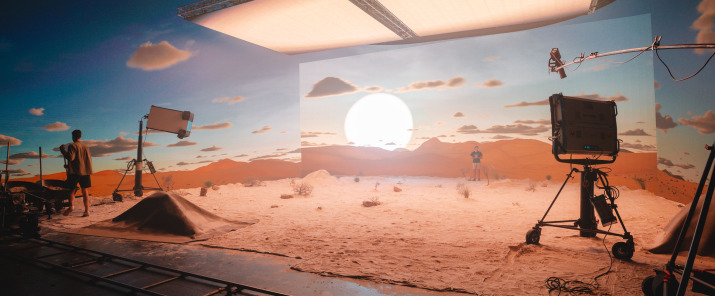
Exploring the Fascinating World of Virtual Production with Noah Kadner. SpeakEasy E15
Virtual production is an innovative approach that combines the realms of video games and movies, going beyond traditional modeling techniques. This emerging field has garnered significant interest due to its potential to revolutionize the entertainment industry. Artists interested in crossing over to virtual production may need to retrain and develop new skills to excel in this rapidly evolving field. In this article, we will explore the concept of virtual production and discuss the skills and opportunities it presents. We recently discovered this topic with Noah Kadner in a recent episode of the SpeakEasy podcast. Read this article to get some valuable insights from this podcast.
Our Guest
 Noah Kadner, a distinguished guest on the Devoted Speakeasy podcast, is an expert in the field of virtual production. As a virtual production editor for American Cinematographer Magazine, he brings a wealth of knowledge and experience to the conversation. With a passion for combining movies and video games, Noah has been at the forefront of exploring the intersection of these two mediums. As a writer, editor, and co-founder of a consulting company focused on virtual production, he has contributed numerous articles and insights to the industry. With his deep understanding of the subject matter, Noah provides valuable perspectives on the current state and future of virtual production.
Noah Kadner, a distinguished guest on the Devoted Speakeasy podcast, is an expert in the field of virtual production. As a virtual production editor for American Cinematographer Magazine, he brings a wealth of knowledge and experience to the conversation. With a passion for combining movies and video games, Noah has been at the forefront of exploring the intersection of these two mediums. As a writer, editor, and co-founder of a consulting company focused on virtual production, he has contributed numerous articles and insights to the industry. With his deep understanding of the subject matter, Noah provides valuable perspectives on the current state and future of virtual production.
The Intersection of Movies and Video Games
The convergence of movies and video games is not entirely new, with intellectual property often crossing over between the two mediums. However, recent developments in technology have enabled the tools used in video game creation, such as game engines like Unreal Engine, to be employed in movie production. Game engines offer real-time rendering capabilities and high-quality visuals, allowing visual effects to be incorporated directly in front of the camera during filming. This integration has resulted in a seamless blend of cinematic storytelling and interactive digital environments.
Growing Adoption and Job Opportunities
Virtual production has gained significant traction in the entertainment industry, with large-scale productions like "The Mandalorian" leading the way. The use of game engine technology in filmmaking has proliferated, with numerous studios investing in LED volumes powered by game engines. Even blockbuster superhero movies, like "Ant-Man 3" and the latest "Thor" installment, have utilized virtual production techniques. As the adoption of virtual production continues to accelerate, the number of job opportunities in this field is expected to grow significantly.
Skills and Retraining for Artists
Artists interested in pursuing virtual production may need to acquire new skills and undergo retraining to meet the specific demands of the field. One crucial aspect is the ability to create assets that look highly realistic and photographic, akin to the quality seen in movies. While video games often prioritize convenience in lighting, movies require a more nuanced understanding of how lighting works in the real world. Therefore, artists should spend time studying cinematic styles and familiarizing themselves with photographic techniques.
Technical Considerations
Apart from mastering visual aesthetics, artists entering the virtual production space should also be mindful of technical considerations. Performance optimization is essential, as real-time rendering requires powerful hardware to maintain consistent frame rates. Virtual production relies on computer systems with high specifications to deliver seamless visuals. Artists need to ensure that their assets and scenes are optimized to meet the technical requirements of the production environment, as any drop in frame rates or performance issues can affect the overall quality of the final output.
The Virtual Production Process
The virtual production process shares similarities with video game development. It begins with pre-production, where the story and visual elements are conceptualized. In virtual production, the focus is on defining the sets, environments, and textures that will be projected onto LED walls. These LED volumes serve as the backdrop for the scenes, and the integration between the physical elements (e.g., real props or actors) and the virtual environments is crucial for creating a seamless illusion on camera. Adequate preparation during pre-production is essential to ensure that the environments and assets are ready for filming, as adjustments during production can be time-consuming and costly.
Virtual production is an exciting frontier that pushes the boundaries of traditional filmmaking and video game development. It offers unique opportunities for artists to bridge the gap between these two mediums and contribute to cutting-edge productions. While retraining and acquiring new skills may be necessary, the growing adoption of virtual production and the increasing demand for skilled professionals in this field make it a captivating avenue to explore for artists seeking new horizons.
Watch our podcast episode to get some more valuable information on the topic:
